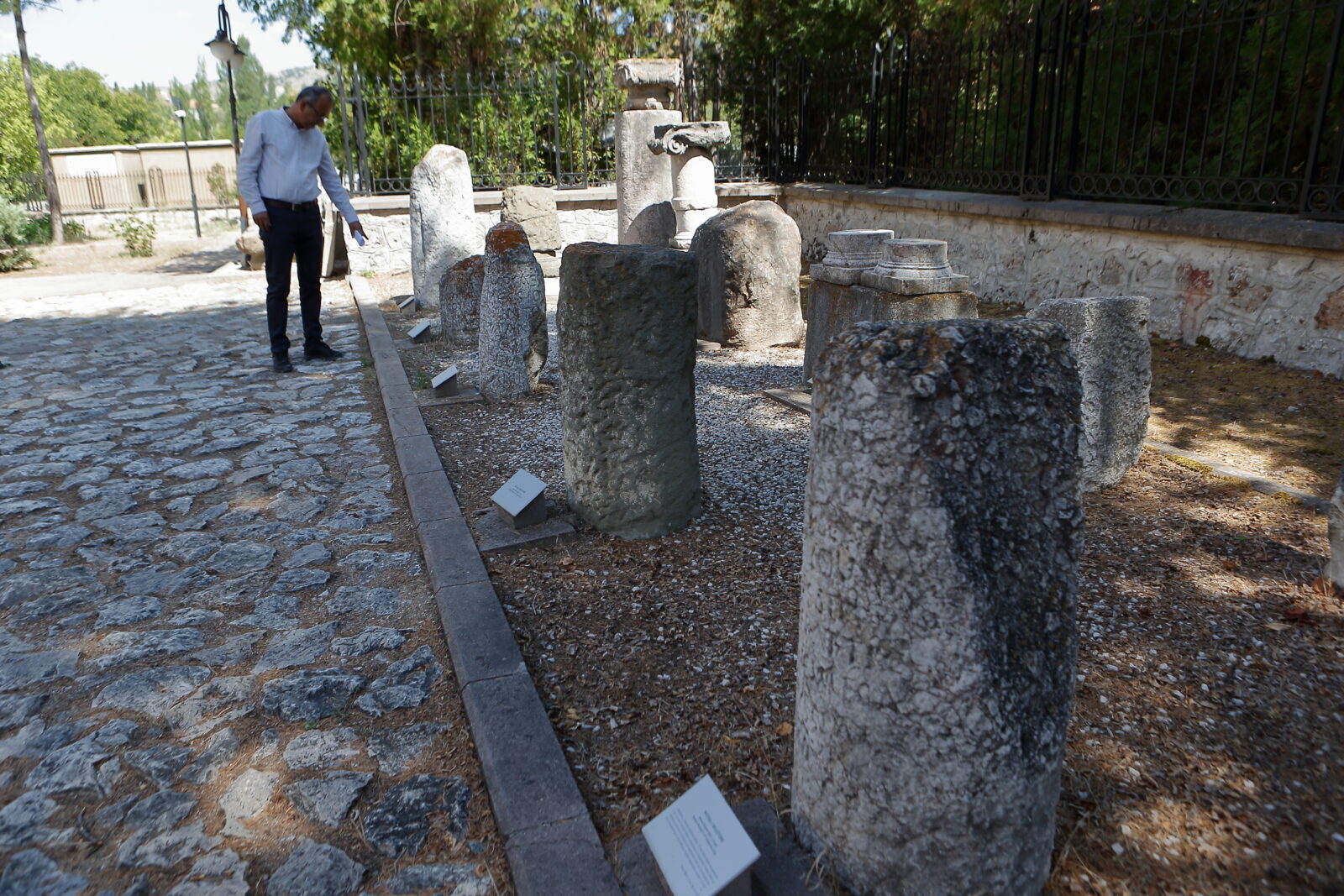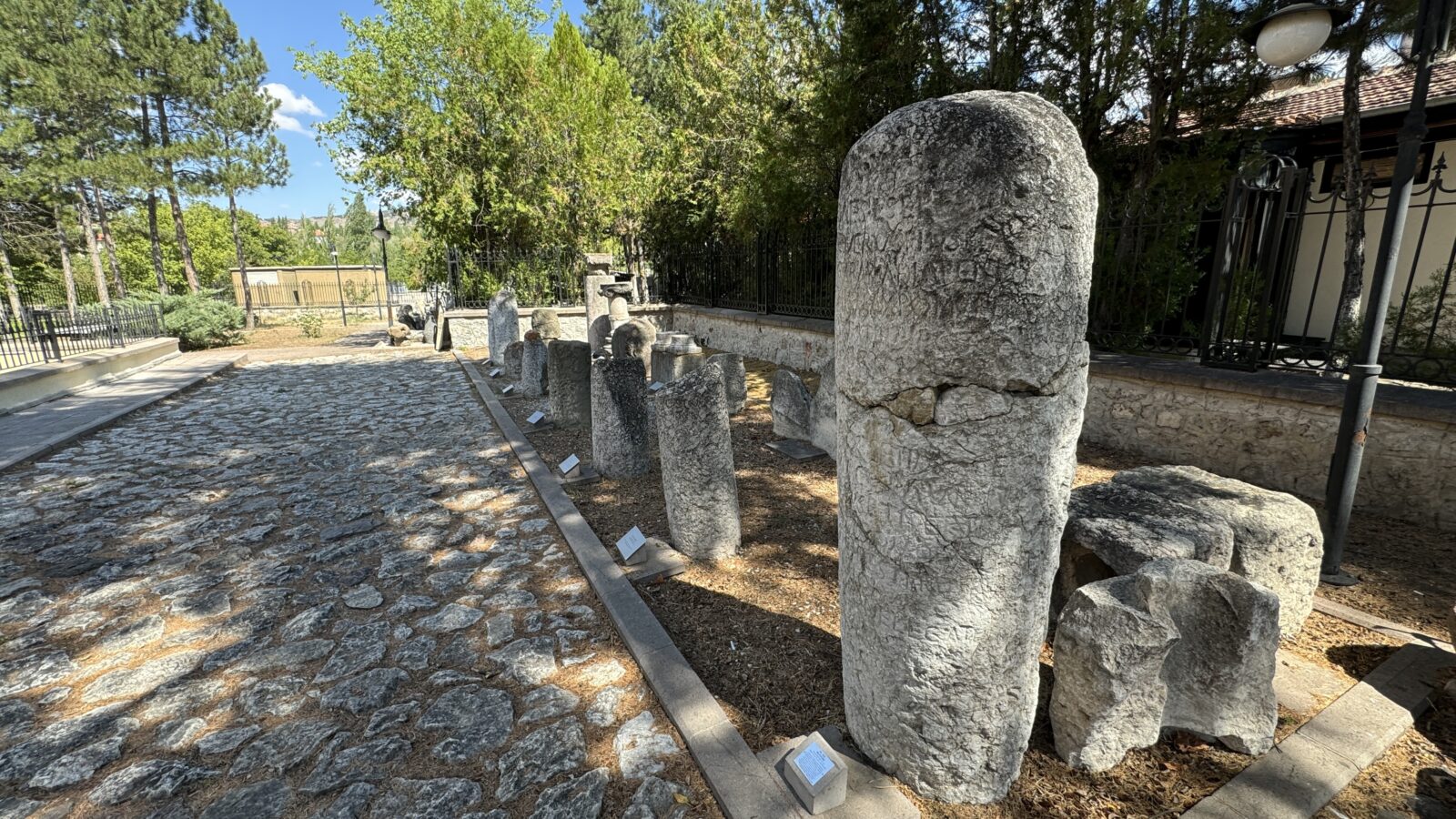
Bogazkale Museum in Corum presents eight ancient Roman milestones, dating back approximately 2,000 years. These cylindrical stones, discovered during excavations in Bogazkale, served as early traffic signs for the Roman Empire, guiding travelers and armies by indicating directions and distances to key destinations.
Bogazkale is renowned for its historical significance, particularly as the home of the ancient Hattusha archaeological site.

This area, rich in cultural heritage from the Hatti and Hittite civilizations, boasts traces of history dating back to 6,000 B.C. and is recognized on UNESCO's World Heritage and Memory of the World lists.
Artifacts unearthed from Hattusha and its surroundings, including the Roman milestones, are proudly displayed at Bogazkale Museum.
The museum's outdoor exhibit features a reconstructed Roman road where these milestones are placed, allowing visitors to experience a piece of ancient Roman infrastructure.

Bogazkale Museum Director Resul Ibis explained to AA that the cylindrical Roman milestones are often mistaken for columns by visitors. He clarified, "These stones, dating to the 1st to 3rd centuries A.D., contain Latin inscriptions that mention the emperors who commissioned the roads and the governors who oversaw their construction."
Emphasizing their role as ancient traffic signs, Ibis added, "These stones acted as markers, showing the remaining distance to a destination, much like today's kilometer markers. Their cylindrical shape often causes confusion with columns."
Research conducted by historians has revealed at least three major ancient roads passing through the Hattusha region. One such road, known in antiquity as "Tavium," connected what is now Yozgat Buyuknefes with Bogazkale.
The road then branched off towards ancient Galatia (modern-day Ankara) and Komana (present-day Tokat), with another route leading to the current Corum-Amasya highway.

Highlighting the importance of roads throughout history, Ibis stated, "Roads were crucial for movement and trade. In ancient times, armies traveled east and west, requiring durable roads for their carts and wagons. The Romans constructed stone-paved roads, and the milestones displayed in our museum are remnants of that era, illustrating how this region served as a crossroads of the ancient world."
The museum director also pointed out that the 2,000-year-old road system is vividly recreated within the museum, showcasing how these routes served both military and commercial purposes.
"Roman milestones were the ancient equivalent of modern traffic signs. Travelers back then could navigate their way and measure the remaining distance to their destination using these stones," Ibis concluded.
Bogazkale Museum not only preserves the legacy of ancient civilizations but also revives the transportation networks that once connected the Roman Empire. These Roman milestones, reminiscent of today’s traffic signs, offer a fascinating glimpse into how ancient societies navigated their world, ensuring that both travelers and armies could reach their destinations with ease.